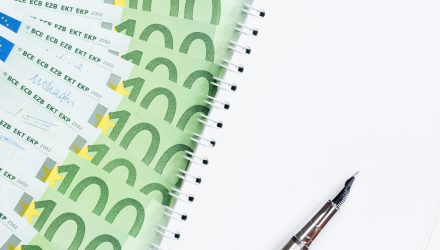The iShares Core U.S. Aggregate Bond ETF (NYSEArca: AGG) has been the go-to ETF when it comes to getting core bond exposure, but it’s certainly not the only option. When investors want a bit more yield in exchange for more credit risk, they can opt for funds like the iShares Core Total US Bond Market ETF (NasdaqGM: IUSB).
IUSB seeks to track the investment results of the Bloomberg Barclays U.S. Universal Index. The fund generally will invest most of its assets in the component securities of the index and may also invest in certain futures, options and swap contracts, cash and cash equivalents, including shares of money market funds advised by BFA or its affiliates, as well as in securities not included in the underlying index, but which BFA believes will help the fund track the underlying index.
The index measures the performance of U.S. dollar-denominated taxable bonds that are rated either investment-grade or high yield.
“The benchmark index represents a union of the Bloomberg Barclays U.S. Aggregate Bond Index (“the AGG”) with other sectors not represented in the AGG, like high-yield bonds,” wrote Neal Kosciulek in Morningstar. “The additional sectors are small relative to those already contained in the AGG, so there is a large overlap between this fund and the AGG. The inclusion of corporate debt rated below investment-grade enables the fund to generate higher yields and hold on to bonds that are downgraded to junk from investment-grade (“fallen angels”), which may be temporarily undervalued because of concentrated selling pressure from investment-grade managers.”
IUSB essentially takes the AGG and adds a dose of nitrous oxide to its engine, adding more yield to the mixture albeit more risk, but not too much risk.
“Although this strategy takes more credit risk than the AGG, it takes less credit risk than the Morningstar Core-Plus Bond category average,” Kosciulek added. “Bonds rated below investment-grade represented less than 10% of the fund’s assets at the end of November 2019, about half the figure for the category average, while Treasury bonds carried twice the weighting here (35%) as they did in the category average.”
The central bank took a pause on its rate-cutting measures in its last interest rate policy meeting of 2019. While it’s uncertain on which direction the Federal Reserve decides to go at the start of 2020, funds like the IUSB can still provide investors with that core bond exposure, while still diversifying its debt exposure to riskier issues in order to achieve greater yield.
The fund generated a gain of over 9% in 2019 based on Morningstar performance numbers with a paltry expense ratio of just 0.06%.
For more market trends, visit ETF Trends.

